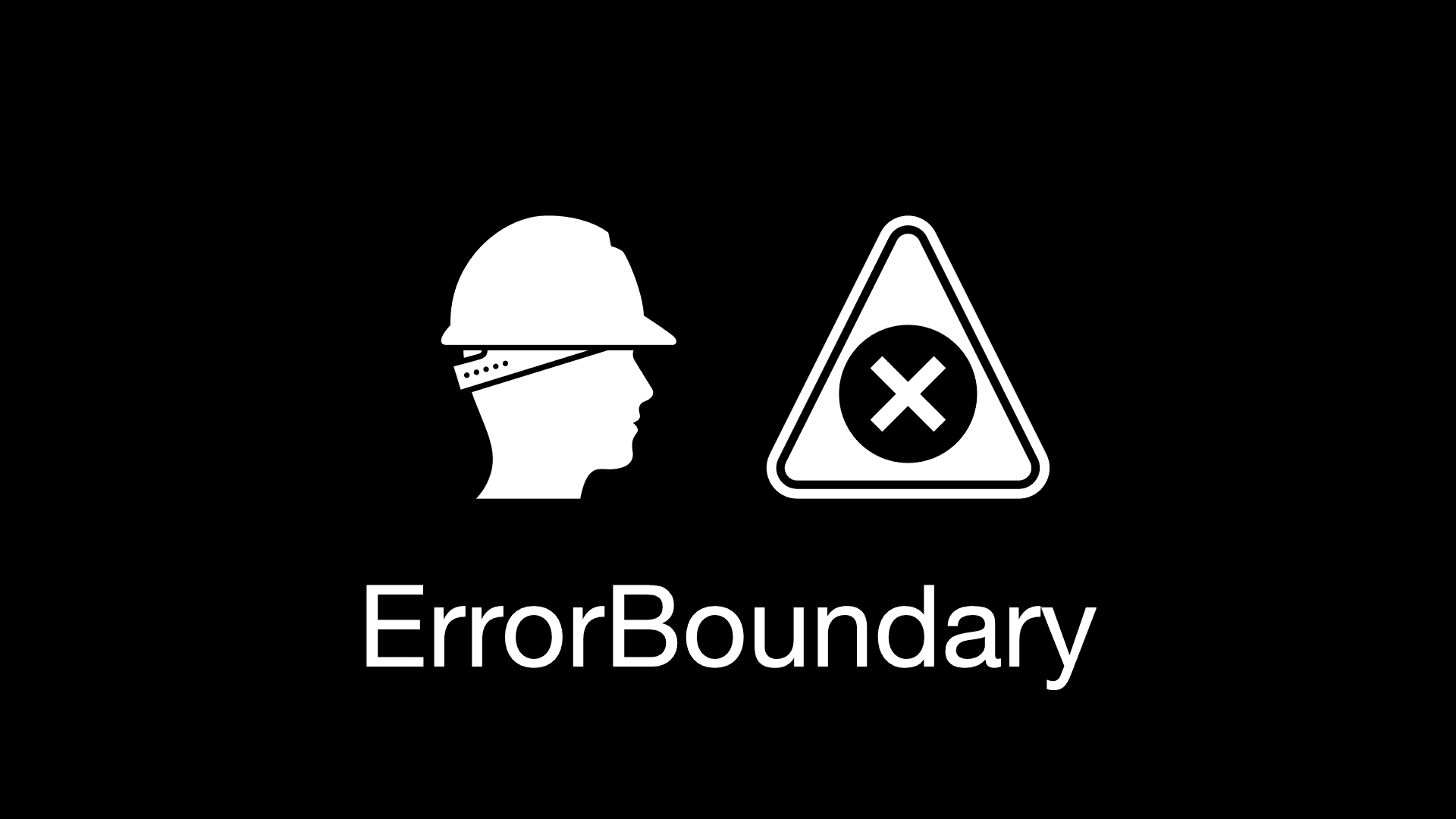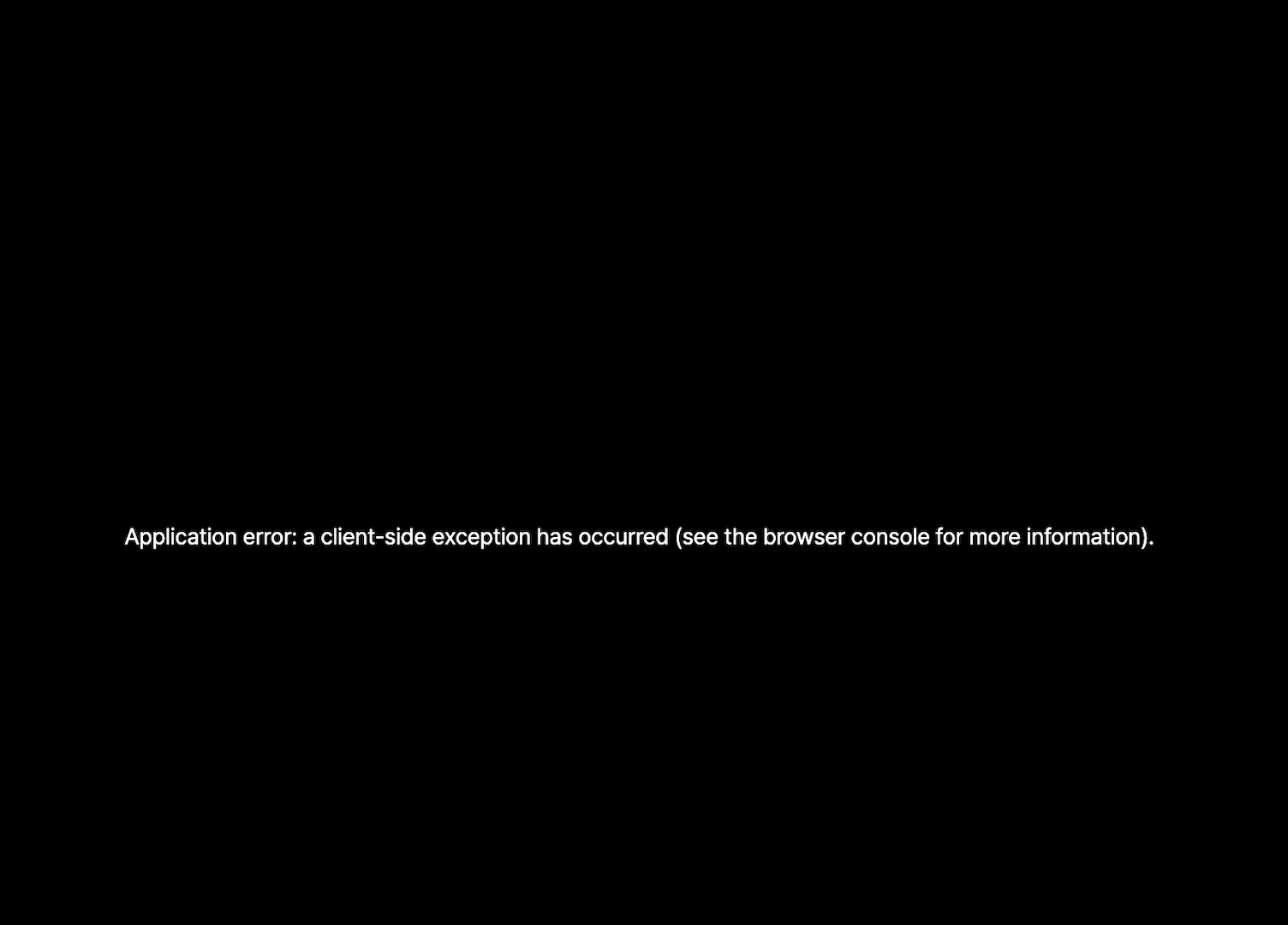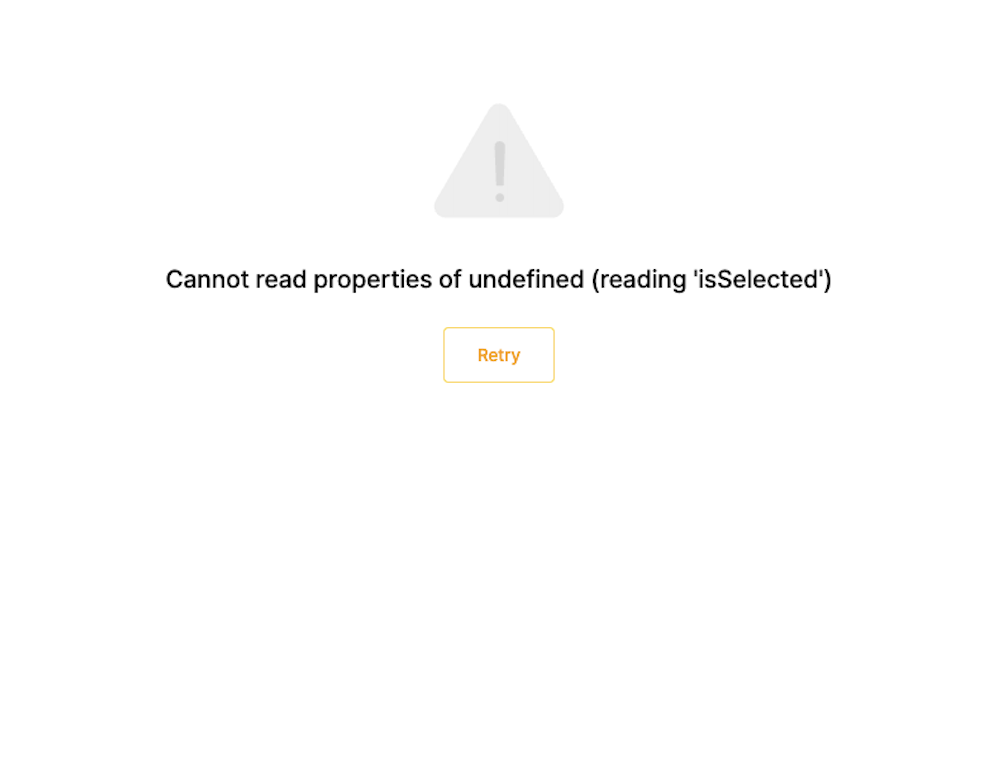서비스에 안전장치 마련하기 - ErrorBoundary 적용
6 min read
프로젝트 특성상 여러 커뮤니티를 관리하다 보니 외부 개발자가 프로젝트 코드에 작업하는 경우도 빈번하게 발생한다.
그래서 항상 예상하지 못한 에러 상황을 마주하게 된다.
문제 상황
Next.js Pages Router방식과 관련된 글입니다.
현재 Next.js 를 사용하고 있기 때문에 일반적인 에러 상황에 대해서는 _error.tsx 로 대처하고 있었다.
_error.tsx
function Error({ statusCode }) {
... // statusCode에 따라 에러 화면을 구성합니다.
}
Error.getInitialProps = ({ res, err }) => {
const statusCode = res ? res.statusCode : err ? err.statusCode : null
return { statusCode }
}
export default Error하지만 _error.tsx 로도 처리하지 못하는 상황이 발생할 수 있는데 런타임 에러가 해당된다.
대표적으로 다음과 같은 타입 에러가 발생할 수 있다.

이 코드가 배포 환경까지 반영되면 다음과 같은 상황이 초래된다.

배포 과정에서 빌드는 잘 되었지만 예상치 못한 에러 화면이 등장해서 처음 접하게 되면 많이 당황스럽다. 😵
오류에 대한 내용도 화면에 포함되어 있지 않다. 그래서 어디가 잘못 되었는지 화면만 봤을 때 찾기 힘들다.
결국 로컬 환경에서 다시 확인해야 하는 상황이 발생하는데 이 과정이 굉장히 많은 시간을 소요하게 만든다.
이러한 상황을 막기 위해 최소한의 안전 장치라도 필요하다는 생각을 하게 되었다.
ErrorBoundary
Fault tolerance is the property that enables a system to continue operating properly in the event of the failure of some (one or more faults within) of its components.
React에서는 렌더링 도중 에러가 발생할 때 최소한의 UI를 표시할 수 있는 도구로 ErrorBoundary를 사용할 수 있다.
공식 문서에서는 다음과 같은 코드를 제공한다.
ErrorBoundary 예제 코드
class ErrorBoundary extends React.Component {
constructor(props) {
super(props)
// Define a state variable to track whether is an error or not
this.state = { hasError: false }
}
static getDerivedStateFromError(error) {
// Update state so the next render will show the fallback UI
return { hasError: true }
}
componentDidCatch(error, errorInfo) {
// You can use your own error logging service here
console.log({ error, errorInfo })
}
render() {
// Check if the error is thrown
if (this.state.hasError) {
// You can render any custom fallback UI
return (
<div>
<h2>Oops, there is an error!</h2>
<button type="button" onClick={() => this.setState({ hasError: false })}>
Try again?
</button>
</div>
)
}
// Return children components in case of no error
return this.props.children
}
}
export default ErrorBoundaryErrorBoundary의 주요 코드를 한 번 알아보자.
getDerivedStateFromError
오류에 대한 응답으로 상태를 업데이트하거나 사용자에게 오류 메시지를 표시할 수 있는 역할을 한다. 렌더링 도중 자식 컴포넌트에서 오류가 발생하면 호출되는 흐름으로 이를 통해 에러 메시지를 표시할 수 있게 된다.
파라미터로 error를 받으며 일반적으로는 Error의 인스턴스이지만,
문자열이나 null을 포함한 모든 값을 받을 수 있다.
반환 값은 컴포넌트에 에러 메시지를 표시할 상태를 반환하면 된다.
주의할 점으로 static getDerivedStateFromError은 순수 함수이어야 한다.
사이드 이펙트가 필요하면 componentDidCatch를 활용할 수 있다.
componentDidCatch
에러 발생 시 추가 로직을 구성할 수 있는 역할을 한다. 예를 들어 에러를 로깅할 때 사용할 수 있다.
파라미터로 error와 info를 받는다.
error는 getDerivedStateFromError의 error처럼 일반적으로는 Error의 인스턴스이지만,
문자열이나 null을 포함한 모든 값을 받을 수 있다.
info는 오류에 대한 추가 정보가 포함된 객체이다.
componentStack 필드의 경우에는 오류가 발생한 컴포넌트의 스택 추적, 상위 컴포넌트의 이름 및 소스 위치 포함된다고 한다.
componentDidCatch에서는 어느 것도 반환하지 않는다.
커스텀하게 사용하기
예제 코드를 봤을 때 그대로 쓰기에는 아쉽다. 재사용성을 높이고 타입을 적용할 필요가 있다.
관련 라이브러리들(react-error-boundary, suspensive)도 존재하지만 우선 가볍게 쓰고 싶었다.
프로젝트에 새로운 의존성이 추가되는게 부담스러운 상황이었다.
따라서 오픈 소스에서 구현된 코드를 참고하여 현재 요구 상황에 맞게 간단한 ErrorBoundary를 만들어보자.
크게 다음과 같은 기능을 추가할 것이다.
fallback: 에러가 발생했을 때 보여줄 컴포넌트reset: 재실행 함수onError: 에러가 발생했을 때 실행시키는 함수
코드로 구성하면 다음과 같다.
ErrorBoundary 코드
import React, { Component, ErrorInfo, FunctionComponent, ReactNode } from 'react'
interface ErrorBoundaryFallbackProops<TError extends Error = Error> {
error: TError
reset: () => void
}
interface ErrorBoundaryProps {
children?: ReactNode
onError?(error: Error, info: ErrorInfo): void
onReset?(): void
fallback: ReactNode | FunctionComponent<ErrorBoundaryFallbackProops>
}
type ErrorBoundaryState<TError extends Error = Error> =
| { isError: true; error: TError }
| { isError: false; error: null }
const initialErrorBoundaryState: ErrorBoundaryState = {
isError: false,
error: null,
}
class ErrorBoundary extends Component<ErrorBoundaryProps, ErrorBoundaryState> {
static getDerivedStateFromError(error: Error): ErrorBoundaryState {
return { isError: true, error }
}
state: ErrorBoundaryState = initialErrorBoundaryState
componentDidUpdate(
prevProps: Readonly<ErrorBoundaryProps>,
prevState: Readonly<ErrorBoundaryState<Error>>,
snapshot?: any,
) {
const { isError } = this.state
if (isError && prevState.isError) {
this.reset() // 재실행 함수
}
}
componentDidCatch(error: Error, into: ErrorInfo) {
console.error('Uncaught error:', error, into) // 에러 로깅
this.props.onError?.(error, into) // 에러 발생 시 호출할 수 있는 함수
}
reset = () => {
this.props.onReset?.()
this.setState(initialErrorBoundaryState)
}
render() {
const { children, fallback } = this.props
const { error, isError } = this.state
let childrenOrFallback = children
if (isError) {
if (typeof this.props.fallback === 'undefined') {
if (process.env.NODE_ENV === 'development') {
console.error('ErrorBoundary requires a defined fallback.')
}
throw error
}
if (typeof fallback === 'function') {
const FallbackComponent = fallback
childrenOrFallback = <FallbackComponent error={error} reset={this.reset} /> // 에러 발생 시 표시할 컴포넌트
} else {
childrenOrFallback = fallback
}
}
return childrenOrFallback
}
}
export default ErrorBoundary이렇게 구성한 코드를 프로젝트에 적용해보자.
_app.tsx
<ErrorBoundary
fallback={({ error, reset }) => (
<GlobalErrorContainer errorMessage={error.message} onReset={reset} />
)}
>
...
<Components {...pageProps} />
</ErrorBoundary>이제 다음과 같이 화면을 구성할 수 있게 된다.

마무리
이번에 ErrorBoundary 를 도입하면서 다음과 같은 효과를 기대할 수 있을 것 같다.
- 최소한의 안전 장치 마련
- QA 과정에서 빠른 원인 파악
- 에러를 선언적으로 관리해서 코드 내 관심사 분리
좀 더 알아보니 app router 방식의 error-handling에서는 error.tsx global-error.tsx 방식으로 대처가 가능해서 더 편리하게 적용할 수 있어 보인다. 🧐
참고 문서
- Catching rendering errors with an error boundary
- static getDerivedStateFromError(error)
- componentDidCatch(error, info)